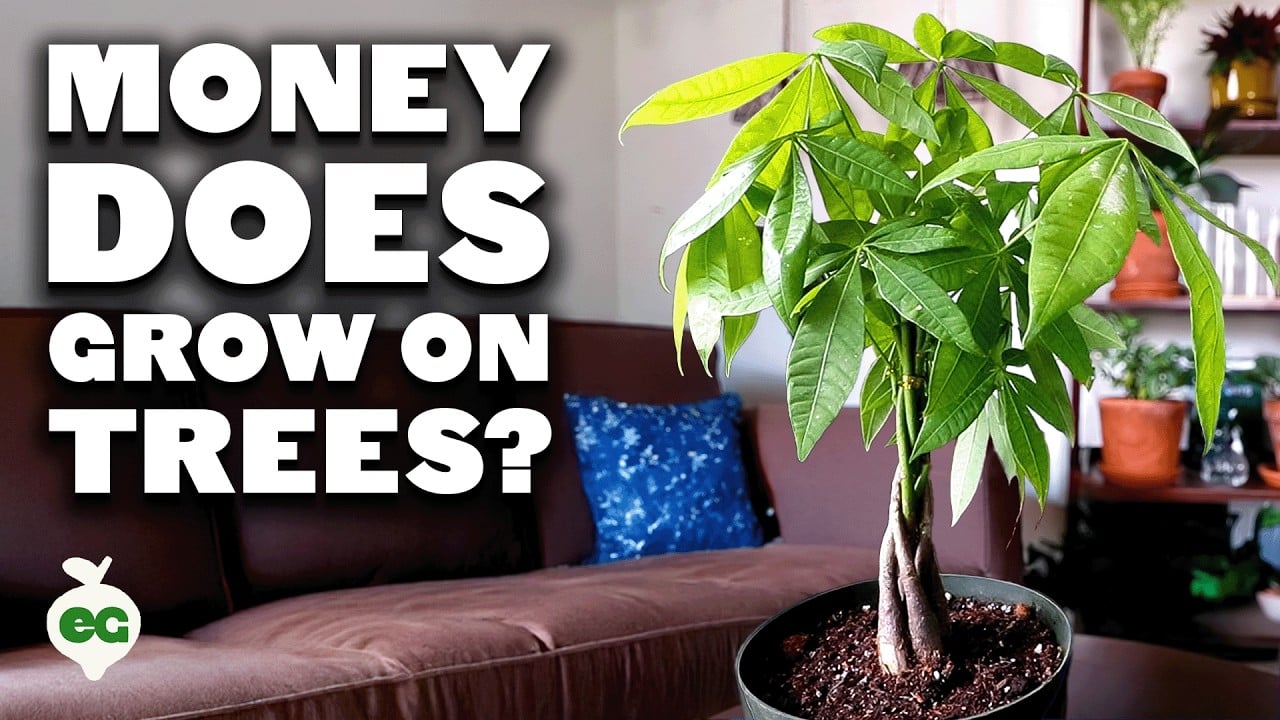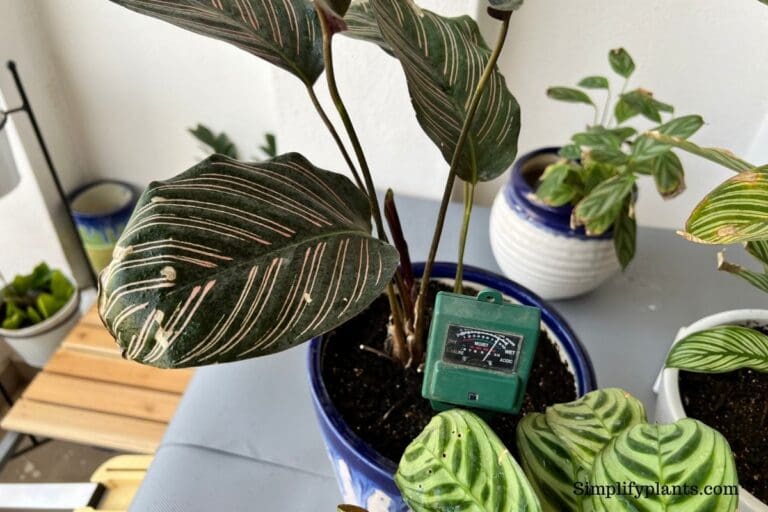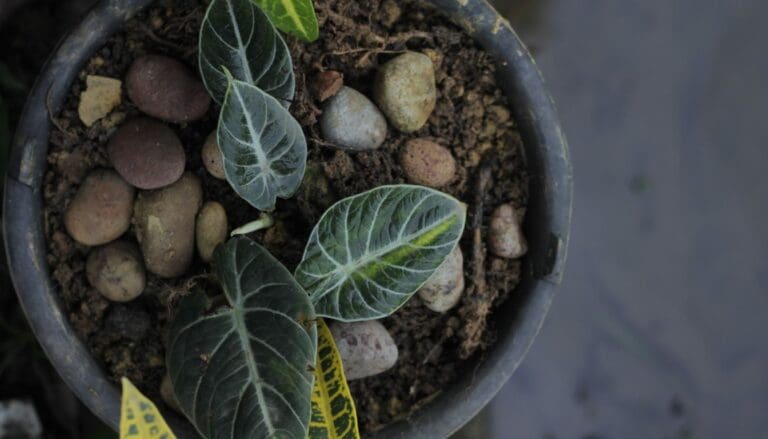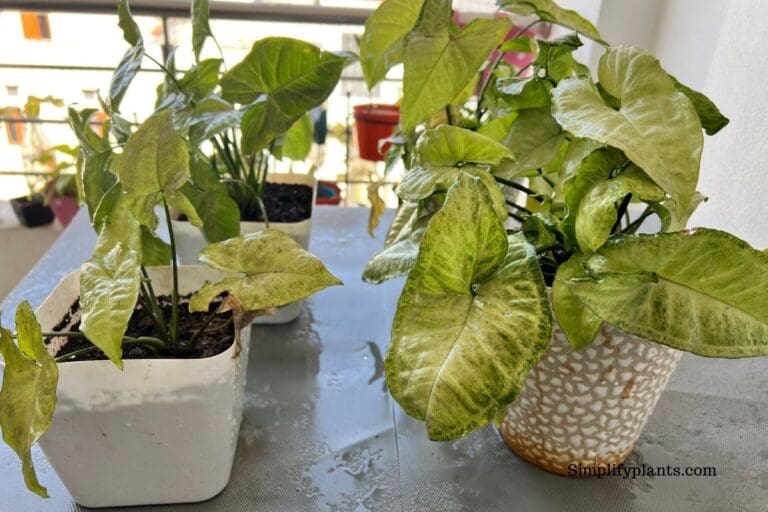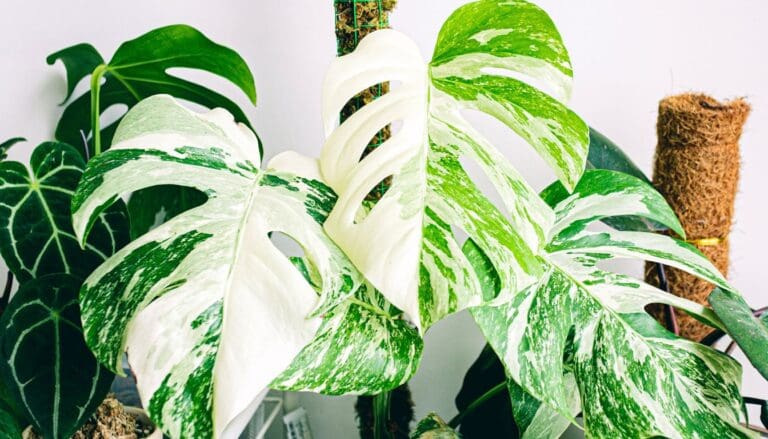Money Tree Trunk Dead: How To Remove?
One common problem in the braided money trees is that one of their trunks can die. It is sad and worrisome as you might not know what to do with the dying trunk.
So, today, in this article, we will learn if you should remove the dead trunk from your money tree.
As a general rule, you must remove any dying trunk of your money tree to protect the healthy part from wilting. A soft and squishy stem usually indicates problems like stem rot or root rot. Check the plant carefully to identify the problem and take the necessary steps to save your money tree.
Let us understand the possible reasons and signs of a dying money tree trunk so that you can act fast to save it if possible. If not, we will also learn the steps to remove the dead trunks for your money tree.

Please note: Simplify Plants is reader-supported. Some links in the post are affiliate links and I get a commission from purchases made through links in the post.
Signs of a dying money tree trunk
Before a trunk of your money tree finally gives up on you, it will show some signs. If you can catch the signs and find out what’s wrong with the plant, you might be able to save the trunk if it is not too late.
- Falling leaves
- Yellow or brown leaves
- A foul odor coming from the soil
- Droopy leaves
Now let’s understand the reasons for these problems.
Falling leaves
Falling leaves can be a sign of either overwatering or shock.
When your money tree is exposed to any sudden change, it tends to become stressed or get shocked.
This can happen due to transportation from one place to another, repotting, pruning, temperature fluctuations, etc.
When your money tree is shocked, it can drop a few leaves, but if you don’t take care of the plant by providing suitable living conditions, the plant will start getting weak, affecting the trunk.
Overwatering is a common problem, but it can lead to various other issues. Your money tree might be losing leaves due to overwatering.
You can save the overwatered money tree if the roots are not at the last stage of root rot, but if they are severely damaged and the trunk is soft, you must get rid of the dying trunk.
Yellow or brown leaves
Yellow or brown leaves are a sign of overwatering. If you have been watering your money tree without checking its soil, you might have overwatered it.
If the money tree does not have a sound drainage system – well-draining soil or a pot with drainage holes, that can also lead to overwatering.
Yellow or brown leaves are the initial signs of root rot. So you should check the roots of the money tree if you notice this sign.
Foul odor coming from the soil
If you keep overwatering the money tree without giving the soil time to dry out, it can lead to root rot.
When there is root rot, the soil starts giving out a foul smell. If you go near the plant, you will notice that this smell is coming from the base of the plant.
Root rot is accompanied by bacteria and mold on the soil that leads to this foul smell.
Other than overwatering, low light and a poor drainage system are reasons for this problem.
Droopy leaves

Droopy leaves can either be due to overwatering or underwatering.
If you don’t water your money tree on time and give long gaps between the watering, it can have droopy leaves. It is easy to treat this as you need to provide the plant a good soak and not neglect it in the future.
However, if you underwater your money tree for a long time, it will get dehydrated and can start dying due to lack of water and nutrition.
On the other hand, if the soil remains moist for an extended period, it can make the leaves soft and droopy. And the trunk will become soft if this situation extends.
If the droopy leaves are dry, the plant is underwatered. On the contrary, an overwatered plant will have moist and droopy leaves.
How to save the Money tree trunk before it dies?
It is possible for you to save the money tree if you can identify the signs during the initial stages before it is too late.
If any of the trunks of the braided money tree have not been affected yet, you can repot the plant and make some changes in the care routine to save it from further damage.
Let’s check out how you can repot the money tree.
- Take the money tree out of its pot by gently holding the stem and pulling it out of the pot.
- Check the roots and wash the roots thoroughly to get rid of the soil. Be careful not to damage the roots.
- Keep the roots under indirect sunlight to let the water dry from it.
- Prune any damaged roots or roots that have started changing color or texture.
- In the meantime, take a new pot that is 2” bigger than the size of your money tree. Make sure that the pot contains drainage holes. Put some pebbles in the pot so that the drainage holes will not get blocked.
- Prepare a well-draining soil mix by adding sand, perlite, or coconut coir to the potting mix and fill half of the pot with the soil.
- Place the money tree inside the pot and add soil from all sides.
- Prune the discolored leaves or damaged branches. But don’t prune excessively as that can shock the plant.
- Water your money tree and place it in a bright area that gets sufficient indirect light.
- Avoid fertilizing immediately and let the plant get used to the changes.
What to do if the money tree trunk is dying?
If the stem of the money tree has started becoming soft and mushy, you might not be able to save it just by repotting the plant, but you can save the plant if you get rid of the dying trunk.
You might be thinking that you can keep the dead trunk on the plant, but that is not the right thing to do. If the dead trunk stays on the plant, it will eventually affect the other trunks, and the whole plant can die because of it.
So, if you want to save the money tree, you need to remove the dead trunk.
How to remove the dead trunk from the money tree?

In a braided money tree, each trunk represents a different plant. If you notice that only one trunk is dying while the others are fine, it is because every plant is different from the other.
If you overwatered the money tree and one of the trunks started having root rot, it is because that plant was more vulnerable to root rot than the others.
You need to remove the dead trunk and repot the existing trunks in a new pot to save the other trunks from getting affected by root rot or whatever the issue is.
1. Get the supplies
First, you must get hold of some supplies before you begin the process.
- Pruners
- Disinfectant
- New pot with drainage holes
- Bleach
- Well-draining soil mix
2. Remove the plant from the pot
First, try to get your money tree out of the current pot. Don’t be harsh, and gently take the plant out. After the plant is out, you can take a good look at the roots and the trunks.
Clean the roots by placing them under running water. Make sure not to damage the roots while doing so.
3. Prune the unhealthy roots
If you notice unhealthy brown and mushy roots, you will need to prune them and leave the white and firm ones.
Next, disinfect the pruners and trim the discolored soft roots. Make sure to get the healthy roots out of the way.
4. Take the dead stem out of the braid
After trimming the roots, pull the dead trunk out of the braid. If the trunk doesn’t come out, you can cut through the dead trunk to loosen it from the braid. Be careful, as you don’t want to cut the healthy trunks.
Make sure to discard the dead trunk that you took out of the braid. Also, get rid of the soil mix, as you won’t require that anymore.
5. Prune the top of the money tree
Prune the damaged or discolored leaves and branches on top of the plant. You should prune the plant even if there are no damaged leaves or branches, as reducing the size of the plant will allow it to recover faster.
The healthy branches that you have pruned can be used for propagating a new money tree later on.
Don’t forget to disinfect the pruners after you have finished pruning the money tree.
6. Repot using fresh soil mix and clean or new pot
Take the new pot and make drainage holes under it if it doesn’t have any. If you want to use the old planter, clean it thoroughly with diluted bleach so that no bacteria or mold remains in the pot.
Add some pebbles and then add the well-draining soil mix to the pot and place the money tree inside it. Add soil from all sides to make sure that no air pockets remain inside the soil.
7. Let the money tree recover

You can use stakes to support the money tree if it seems weak.
If you notice that your money tree looks stressed, give it some time to recover. Avoid fertilizing it and place it under indirect light.
You will notice new growth on your money tree after a few weeks of repotting.
How do we prevent the money tree trunks from dying?
With proper care, you can prevent the money tree trunks from dying.
To take good care of your money tree, you need to understand its light, water, soil, and fertilizer requirements so that you don’t do something wrong.
- Place the money tree in a room with many windows and get light on all sides or near a single window that gets 6-8 hours of indirect light. Don’t keep the money tree under direct sun and rotate it at a 45-degree angle every few weeks to get light on all sides.
- Water the money tree when the top layers of the soil are 50-75% dry. Don’t let the soil go bone dry, and don’t water if the soil is moist.
- Use a peat-based or succulent blend of soil that will not hold excess moisture.
- Use a pot 2” bigger than the size of the money tree, and don’t forget to ensure that it has suitable drainage holes.
- Fertilize the plant with a diluted half-strength dose of a well-balanced fertilizer during the growing season. Avoid fertilizing in winter.
- Prune the money tree frequently to avoid overgrowth.
- Repot the money tree every 2-3 years to keep the plant in its best health.
- Don’t expose the money tree to cold drafts and frost during the winter season.
Reference: WIKIPEDIA.
Recommended Garden Supplies
| Product Image | Our Recommended Gardening Supplies | Check Offers! |
|---|---|---|
Top Top
Top
Top
Top
Top
Top
Top
Top | rePotme Houseplant and Tropical Classic Potting Soil Mix | Check Offer On Amazon |
 Top
Top
Top
Top
Top
Top
Top
Top | Espoma Organic Indoor Plant Food | Check Offer On Amazon |
 Top
Top
Top
Top
Top
Top
Top
Top | GooingTop LED Grow Light 6000K Full Spectrum Clip Plant Growing Lamp | Check Offer On Amazon |
 Top
Top
Top
Top
Top
Top
Top
Top | Soil Moisture Meter | Check Offer On Amazon |
 Top
Top
Top
Top
Top
Top
Top
Top | Govee Hygrometer Thermometer, Bluetooth Enabled! | Check Offer On Amazon |
 Top
Top | LEVOIT Humidifiers for Large Room(Best For Plants) | Check Offer On Amazon |
 Top
Top
Top
Top
Top
Top
Top
Top | Upgraded DIY Automatic Drip Irrigation Kit, 15 Potted Houseplants Support | Check Offer On Amazon |
 Top
Top
Top
Top
Top
Top
Top
Top | Stainless Steel Heavy Duty Gardening Tool Set | Check Offer On Amazon |
 Top
Top
Top
Top
Top
Top
Top
Top | Bonide Insecticidal Soap | Check Offer On Amazon |
 Top
Top
Top
Top
Top
Top
Top
Top | Bonide 32 oz Spray Neem Oil for Organic Gardening | Check Offer On Amazon |
 Top
Top
Top
Top
Top
Top
Top
Top | Garden Safe Fungicide | Check Offer On Amazon |

